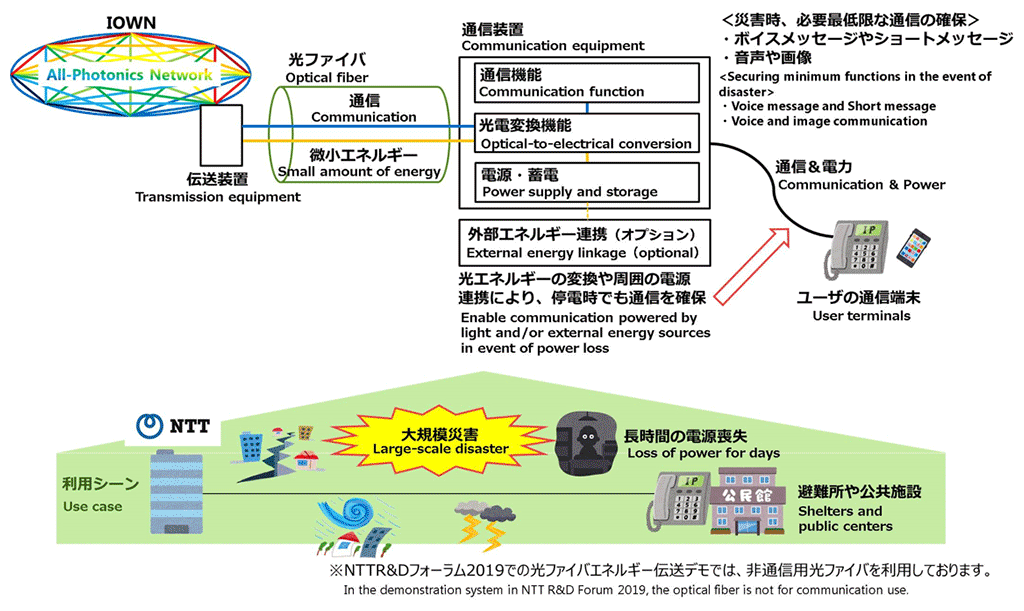Microsoft ends support for Internet Explorer on June 16, 2022.
We recommend using one of the browsers listed below.
- Microsoft Edge(Latest version)
- Mozilla Firefox(Latest version)
- Google Chrome(Latest version)
- Apple Safari(Latest version)
Please contact your browser provider for download and installation instructions.
November 11, 2019
NTT Begins Research on Securing Telecommunications in the Event of Disaster by Effectively Using Small Amount of Energy Transmitted through Optical Fibers
1.Background and Purpose
Long-term power outages have recently occurred over a wide area due to frequent inland earthquakes and large strong typhoons, and recovery has been slow.
In the event of a disaster, it is important to secure telecommunications, such as safety confirmation, in affected areas. In a public switched telephone network using copper cables, users are able to make calls from landlines even during power failure by supplying power for voice communication from the telecom building to the users' premises. However, in a communication network using optical fibers, voice is converted into data and handled along with a large amount of other communication data. Since this requires more power than in the past with the public switched telephone network, it is necessary to use the commercial power supply of the users' premises to make the communication equipment function. In the event of power failure, therefore, users who do not have an emergency power supply cannot use their communication equipment. Also, user terminals with built-in batteries, such as smartphones, will not function when the battery runs out.
To mitigate this situation, NTT aims to develop a communication network using optical fibers to provide telecommunications to users in the event of power failure, as one of the benefits of IOWN*1. We will investigate technology that uses optical fibers not only as a means of communication but also of transmitting a small amount of energy.
2.Future Activities
It is difficult to operate the communication equipment in a users' premises only by the power supplied from telecom buildings because the optical power that can be transmitted by optical fibers for communication use is very small, and the power that can be extracted by optical-to-electrical conversion is limited. We will investigate how to efficiently use optical energy transmitted through optical fibers, power-consumption-reduction technology for communication equipment, and power-generation, storage, and power-supply technology that can handle other micro energy sources such as heat and vibration.
We introduced the basic technology of communication networks that we aim to develop with a demonstration of IP telephone service using a 0ABJ number at the "NTT R & D Forum 2019".
"NTT R & D Forum 2019" website https://labevent.ecl.ntt.co.jp/forum2019/info/
Reference
*1IOWN (Innovative Optical and Wireless Network)
IOWN is a future communications infrastructure to promote a smart world by using cutting-edge technologies such as photonics and computing technologies. More information on IOWN and membership can be found at http://www.iowngf.org
Research concept

Media Contact
NTT
Public Relations
E-mail: ntt-cnr-ml@hco.ntt.co.jp
Information is current as of the date of issue of the individual press release.
Please be advised that information may be outdated after that point.
NTT STORY
WEB media that thinks about the future with NTT










